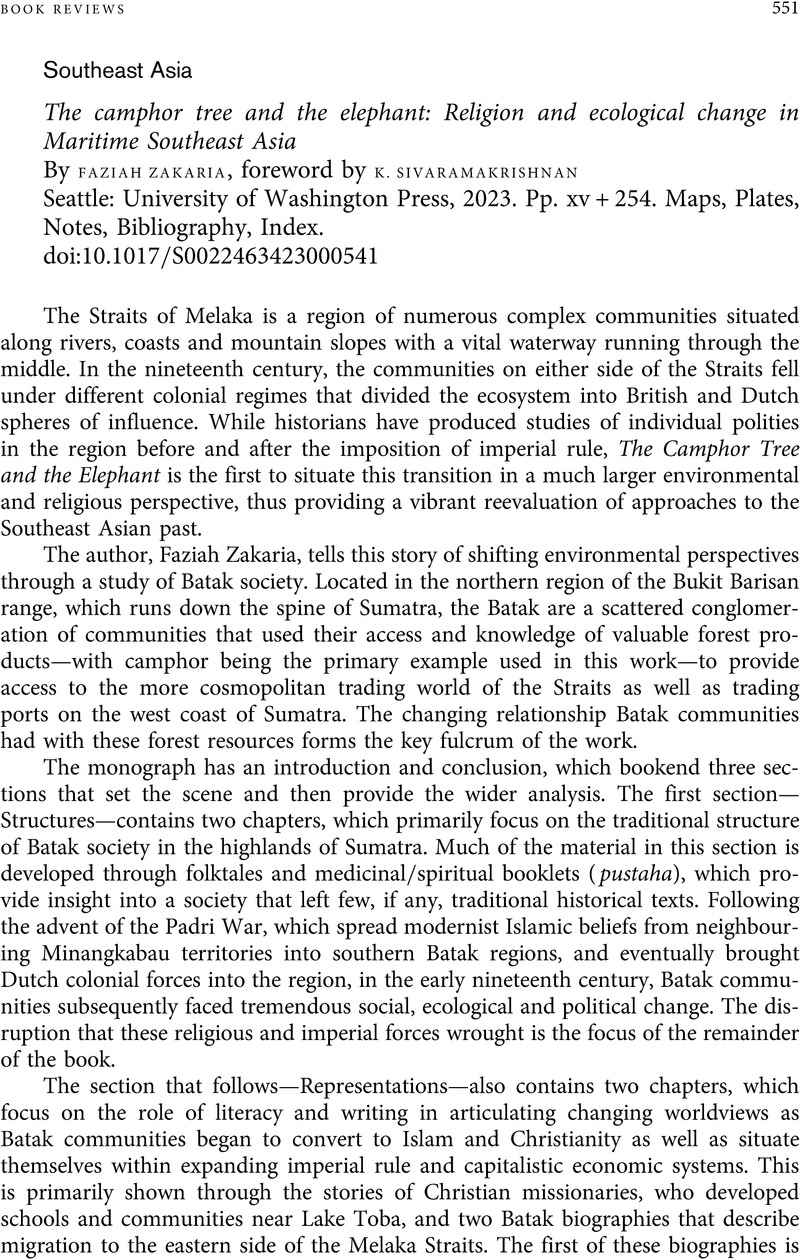No CrossRef data available.
Article contents
Southeast Asia. The camphor tree and the elephant: Religion and ecological change in Maritime Southeast Asia By Faziah Zakaria, foreword by K. Sivaramakrishnan Seattle: University of Washington Press, 2023. Pp. xv + 254. Maps, Plates, Notes, Bibliography, Index.
Review products
Southeast Asia. The camphor tree and the elephant: Religion and ecological change in Maritime Southeast Asia By Faziah Zakaria, foreword by K. Sivaramakrishnan Seattle: University of Washington Press, 2023. Pp. xv + 254. Maps, Plates, Notes, Bibliography, Index.
Published online by Cambridge University Press: 04 September 2023
Abstract
An abstract is not available for this content so a preview has been provided. Please use the Get access link above for information on how to access this content.

- Type
- Book Review
- Information
- Copyright
- Copyright © The National University of Singapore, 2023



